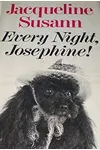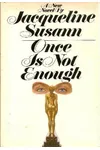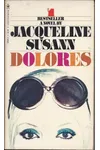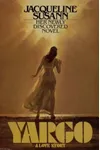Picture a glamorous American storyteller who turned scandal into literary gold—meet Jacqueline Susann! Born in 1918, this actress-turned-novelist shook the publishing world with her juicy, record-breaking bestsellers. Her iconic Valley of the Dolls didn’t just sell millions; it redefined pop fiction with its bold take on fame, love, and betrayal.
From Philadelphia’s vibrant streets to New York’s dazzling lights, Susann’s journey was as dramatic as her novels. With her sharp wit and unrelenting drive, she carved a path from stage to page, leaving a legacy that still captivates readers today.
The Making of Jacqueline Susann
Jacqueline Susann was born on August 20, 1918, in Philadelphia to a Jewish couple: Robert Susan, a portrait painter, and Rose Jans, a schoolteacher. A bright but restless student with a reported IQ of 140, she skipped college to chase fame in New York City. By her early 20s, she was landing small roles in theater and TV, including a stint on The Morey Amsterdam Show. In 1939, she married press agent Irving Mansfield, whose publicity savvy would later fuel her literary success. Her acting career, though, never quite soared, often typecasting her as the glamorous divorcée.
A breast cancer diagnosis in 1962, followed by a mastectomy, was a turning point. Determined to leave a lasting mark, Susann made a pact with herself—and, she believed, with God—for ten more years to achieve stardom. Writing became her new stage, and she poured her showbiz experience into her work.
Jacqueline Susann’s Unforgettable Stories
Susann’s debut, Every Night, Josephine! (1963), was a lighthearted nonfiction tale about her poodle, charming readers with its humor. But it was Valley of the Dolls (1966) that catapulted her to fame. This steamy saga of three women navigating love, drugs, and showbiz sold over 31 million copies, earning a Guinness World Record as the top-selling novel of its time. Its raw depiction of addiction and ambition shocked critics but hooked readers.
The Love Machine (1969) followed, a juicy dive into the cutthroat world of television, topping the New York Times bestseller list for five months. Once Is Not Enough (1973) sealed her historic trifecta, making her the first author with three consecutive number-one bestsellers. Her final novella, Dolores (1976), a roman à clef about Jacqueline Kennedy, was published posthumously. Susann’s style—bold, gossipy, and unapologetically commercial—blended soap-opera drama with real-world grit, paving the way for the modern blockbuster novel.
Her marketing genius, alongside Mansfield, revolutionized publishing. They pioneered book tours and TV promotions, turning Susann into a brand. Clad in Pucci dresses and wielding a pink typewriter, she charmed talk-show audiences, shrugging off critics who called her work trashy. “If I’m selling millions,” she quipped, “I must be good.”
Why Jacqueline Susann Matters
Susann didn’t just write books; she reshaped the literary landscape. By prioritizing readers over critics, she democratized fiction, appealing to diverse audiences with stories of strong, flawed women. Her fearless marketing—book tours, TV spots, even color-testing book jackets—set the standard for today’s author branding. As a feminist and gay rights advocate, she also broke barriers, writing inclusive stories in a male-dominated industry.
Despite her death from breast cancer in 1974 at age 56, Susann’s influence endures. Her novels, adapted into films and TV series, remain cultural touchstones. She proved that commercial success and storytelling flair could coexist, inspiring authors like Jackie Collins and beyond.
About Jacqueline Susann
- Born: August 20, 1918, Philadelphia, Pennsylvania
- Died: September 21, 1974, New York City
- Key Works: Valley of the Dolls, The Love Machine, Once Is Not Enough
- Notable Achievement: First author with three consecutive New York Times number-one bestsellers
Snag Valley of the Dolls and dive into Jacqueline Susann’s scandal-soaked world of glitz and grit!





